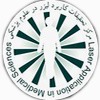|
|
Book / Textbook |
|
1 |
Laser in Dermatology and Medicine |
|
2 |
Laser in IPL Technology in Dermatology and Aesthetic Medicine |
|
3 |
Cosmetic Dermatology Products and Procedures |
|
4 |
Dermatology For Skin of Color |
|
5 |
The Philosophy of EVIDENCE-BASED MEDICINE |
|
6 |
ESSENTIAL Statistical Methods for Medical Statistics |
|
7 |
Laser Dermatology Pearls and Problems |
|
8 |
Myocardial Laser Revascularization |
|
9 |
Principles and Practices in Cutaneous Laser Surgery |
|
10 |
Complications in Cutaneous Laser Surgery |
|
11 |
Photodynamic Therapy in Dermatology |
|
12 |
Photodynamic Therapy |
|
13 |
Step by Step Laser in Ophthalmology |
|
14 |
Femtosecond Laser-Principles and Application in Ophthalmology |
|
15 |
Facial Resurfacing |
|
16 |
The Fundamentals of Low-Power Laser Treatment (Persian Book) |
|
17 |
Laser in Medicine (Persian Book) |
The SBMU RCLUM Clinical Facilities
- Skin Laser Clinic
- Varicose Treatment with Laser
- Laser Clinic for Pains
- Renal Stone Treatment with Holmium Laser
- Treating Benign Prostate Hyperplasia with KTP and Diode Lasers
For many years Laser has been used in treating dermatological problems. The first time Laser was used for treating skin problems and injuries dates back to more than 40 years ago.
During the last 20 years, there have been dramatic achievements in Laser technology, and Laser has been used in treating many dermatological problems and injuries, as well as in congenital problems including vascular and pigmentation, in treating scars, tattoos, etc.
LASER is the abbreviation of Light Amplification by Stimulated Emission of Radiation. There exist different kinds of Laser tools depending on the Laser source used as follows:
- Carbon Dioxide Laser
- Erbium YAG laser
- ND-YAG Laser
- Pulsed dye Laser
- Diode Laser
- Alexandrite Laser
- Argon Laser
- Ruby Laser
Devices in the Laser Research Center, include:
1- Four Gerertion of IPL (FPJ):
Kemedical Company, made in Switzerland, and the tool has got various applications, including:
treatment of hyper-pigmented skin lesion such as, freckle Acne and scars.
Removal of unwanted hair, removal of vascular lesions, such as, telangiectasia rejuvenation
This device typically is a non-invasive device, and does not cause skin injury. For this reason, the day after the laser, patients can return to their own work.
2- Fractional CO2 Laser
Maxell Company, made in Korea
This device is very useful in improving acne and other scars, and facial rejuvenation, and reduces facial dilated pore.
3- Q-switched Nd:YAG 1064, 532 nm
This laser device is used to tattoo removal, treatment of skin lesions, treatment of acne and rejuvenation.
Abnormal Functioning of the veins of the lower extremities is recognized clinically as venous dysfunction or, more commonly, venous insufficiency.
Varicose veins are enlarged veins that are swollen and raised above the surface of the skin.
Varicose veins are often found on the thighs, back of the calves, or the inside of the leg.
| Post-Operation | Pre-Operation |
 |
 |
Clinical manifestations of varicose veins:
- Swollen, dilated, tortuous veins
- Dull aching
- Muscle cramps
- Increased muscle fatigue
- Ankle edema
- Diagnosis- duplex ultrasound
Endovenus Laser Treatment (EVLT):
EVLT is a treatment for Varicose veins in which an optical fiber is inserted into the veins to be treated, and laser light, normally in the infrared portion of the spectrum, is shone into the inferior of the vein. This causes the vein to contract, and the optical fiber is slowly withdrawn.
No more hospitalization, operating theatres, general anesthetic, time off work, painful side effects, scars or uncontrollably recurring varicose veins

- Diode Fox 980 nm
- Made in Germany
- Available at Shohada-E-Tajrish Hospital
Renal Stone Treatment with Holmium Laser
Renal stones are a health problem with a global significance. Iran is on the belt of renal stones covering countries ranging from Egypt, Iran, Pakistan, to India, Thailand, and Indonesia. The prevalence of renal stones has recently increased in recent years; and it is worthy of mentioning that the location of their formation has changed from the lower urinary tract to the upper urinary tract (the kidney and ureter).
The side effects of such stones, especially the ureteral ones include intolerable, sever, recurrent, and drug resistant pains, as well as producing obstruction in the urinary tract system, providing irreversible damage to kidney function, and also preparing grounds for serious urinary tract infections.
Depending on the stone size and many other factors, the treatment protocols may either conservative, or aggressive.
Today, one of the most important advancements in the endoscopic treatment of the renal stones is the Holmium: YAG Laser. The tool is the treatment of choice in intra-corporal uretroscopic lithotripsy which was introduced in 1993, and has so far been the gold standard and very effective method in treating ureteral stones. With this method, no general anesthesia is needed, and the hospital stay time is lower than the other methods.
Presently, the method is used at the SBMU RCLUM located at Shoada-E-Tajrish Educational Hospital.

